The Cooperative Fuel Research (CFR) engine is used extensively throughout the world for testing, research, and instruction in the performance of fuels and lubricants for the internal combustion engine. Principal design work on this prototype engine was accomplished by engineers of Waukesha Motor Company, now a division of Dresser Industries, who served on a Cooperative Fuel Research Committee with representatives of the American Petroleum Institute, Society of Automotive Engineers, Automobile Manufacturers Association, and the National Bureau of Standards.
USA
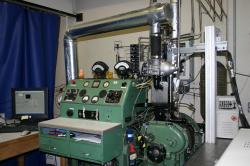
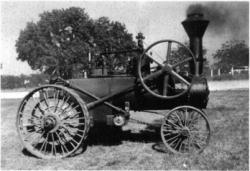
These engines, built by Cooper & Co., of Mount Vernon are among the oldest surviving agricultural steam engines to show the evolution from the portable, skid-mounted engine (ca. 1860) to the horse-drawn engine (1875), through the self-propelled but horse-guided engine (1875) and finally to the self-propelled, self-steered traction engine (1883). Such engines powered the conversion to mechanized farming, which was a great hallmark of the Industrial Revolution.
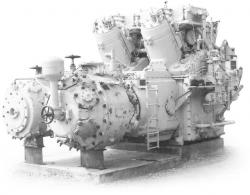
This compressor was a product of the combined technology and design heritage of both the C. & G. Cooper Company of Mount Vernon and the Bessemer Gas Engine Company of Pennsylvania, which had merged in 1929. Ralph L. Boyer, the chief architect of the GMV, worked for Cooper-Bessemer from 1926 through 1965.

Early internal combustion engines produced only a few horsepower and were unable to replace steam engines in most applications until about 1890. By then, they were powerful enough for most portable or remote locations and many small manufactures. By 1900, they were replacing reciprocating steam engines for electric generation, and by 1915, they were being considered for all but the largest installations where steam turbines have dominated to date.

"This is the first Portland cement concrete street built in the United States ... Here started the better roads movement which has given our citizens from coast to coast swift and sure transportation."
- Historic marker, Bellefontaine, Ohio, celebrating the 50th anniversary of America's first concrete pavement, 1941
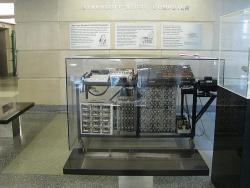
John Vincent Atanasoff conceived basic design principles for the first electronic-digital computer in the winter of 1937 and, assisted by his graduate student, Clifford E. Berry, constructed a prototype here in October 1939. It used binary numbers, direct logic for calculation, and a regenerative memory. It embodied concepts that would be central to the future development of computers.
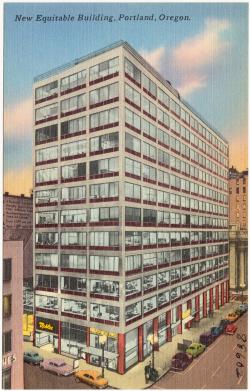
The use of heat pumps for the heating and cooling of the Commonwealth Building, initiated in 1948, was a pioneering achievement in the western hemisphere. The theoretical conception of the heat pump was described in a neglected book, published in 1824 and written by a young French army officer, Sadi Carnot. Its practical application on a large scale is attributable to designers J. Donald Kroeker and Ray C. Chewning, building engineer Charles E. Graham, and architect Pietro Belluschi.


The total length of the Columbia-Wrightsville Bridge is 7,374 feet. Its construction required 100,000 cubic yards of concrete and 8 million pounds of steel reinforcing rods.

A project that combined great engineering ambition and burgeoning civic pride, the Columbia River Highway was built at the dawn of the automobile age out of a desire to bring greater attention to the growing population and natural beauty of the Pacific Northwest. By the time of its completion in the 1920s, the 73.8-mile highway had become a textbook example of modern highway construction and an important commercial and recreational link between Oregon's coastal Willamette Valley and the inland areas of eastern Oregon and Washington.


